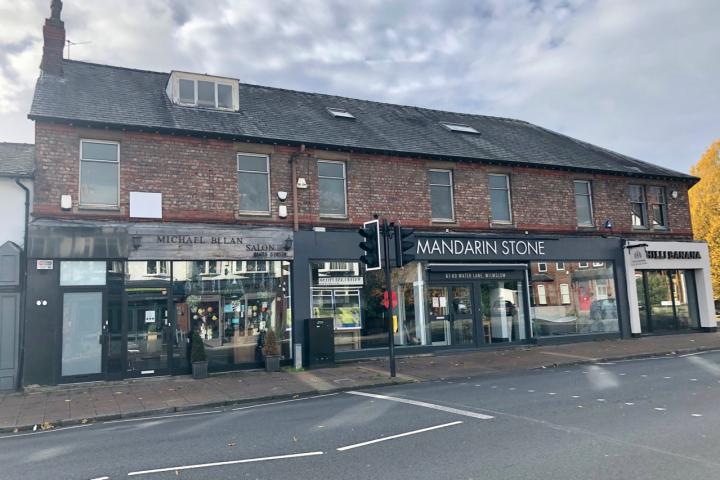
Plans have been submitted to convert empty offices in Wilmslow town centre into ten apartments.
Wilmslow Estate Co. Ltd are seeking to change the use of first and second floor office space to residential at 61-69 Water Lane, which is located above the Mandarin Stone and MB Design retail units.
The project includes a second floor extension at the rear and dormers at front.
The residential development will consist of 8 one bed and 2 bedsits along with one car parking space and ten cycle spaces.
The plans can be viewed on the Cheshire East Council website by searching for planning reference 20/4734M.

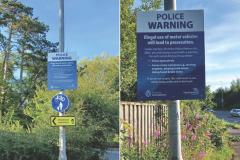

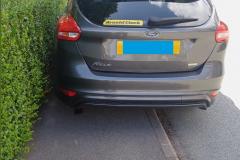
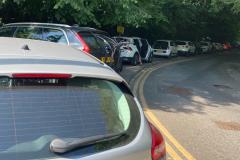
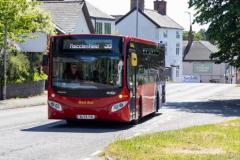

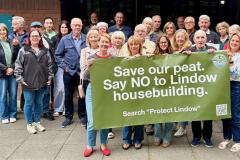
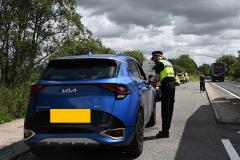
Comments
Here's what readers have had to say so far. Why not add your thoughts below.
An issue with this proposal however is car parking. When it says '...along with one car parking space...' does that mean one space per apartment or one space for all of them? Visitor parking will be a problem. Not sure what is meant by a 'cycle space'. Is it a post to which the bike is tied up? Thinking of cycle theft I reckon a secure cycle storage 'shed' would be a better idea.
For OWNER OCCUPIERS wishing to live in a town and not rely on a car I think this is a great development.
Having more residents in a town centre increases the eyes and ears from a security point of view.
This is partly economic but partly practical. With internet shopping and increasing working from home you don't need a car so much, and when you do it can be more cost effective to use Uber or hire a car for a few days.
As bricks and mortar shops and demand for office space declines its clear that parts of central Wilmslow will increasingly return to residential use... It has already been happening in quite a few areas. But we can't get bogged down in assessing these against old fashioned ways of living or our own personal preferences. They aren't going to suitable for a 2.4 kids family who want garden and space for 2 cars, but for a 20-something living alone who maybe works in Manchester or works from home this kind of accommodation could be ideal.
My main point is that it is overdevelopment of the site.
There is a reason that commercial and residential don’t mix well.
Many years ago the house (now gone for flats) on the corner of Hawthorne Street opposite the Carters Arms changed hands. The new owner called the police one evening to complain about noise. A wise copper lead the woman outside, pointed to the pub and asked if she has spotted it when considering the purchase. A similar situation occured on Oldham Street (?) Manchester when an office was turned into flats. The bar opposite that had operated (The Dry Bar) for years now had to keep the noise down!!
Sensitive home dwellers and business don't mix!!
Let's assume your comments regarding future use of cars/working from home are correct (and I judge your comments to be just a convenient short term biased view taking advantage of present C-19 circumstances) - 1 car space is really blue sky thinking. I haven't seen the scheme but the leader article for me is a little misleading - "..consist of 8 one bed and 2 bedsits.."? but if we assume that the minimum number of bedrooms could = 9 persons, just one of whom (with your thinking) would have a car then it's all a bit far fetched on that score alone.
Under current planning guidelines parking spaces/'dwelling' is at least 1 - that's a significantly large difference - so giving permission for this scheme must be a big NO before it goes any further, applicant go back and think again (wonder where they might magic up say a conservative 3 more parking spaces); perhaps a little more blue sky thinking could propose that the much vaunted electric flying cars could be widely available by the time the offices are converted and go ahead with that as a basis for passing off the scheme.
Good luck with that....
That's pleasant and open minded of you. Perhaps you could explain the reason for my bias and why it's convenient for me to have it?
Anyway, some facts rather than feelings and unsubstantiated judgements...
In 2018 the government published a study about transport use amongst young people, largely comparing the mid-1990s with 2014. It showed huge decline in the rates of learning to drive. For example, in 1994, 48% of 17-20 year olds had a driving license. By 2014, this had plummeted to just 29%. For 21-29 year olds over the same period, it had fallen from 75% to 63%.
Of those who were driving, they were also driving far less than their predecessors. Over the same period, the number of car trips as a driver had almost halved for men under 30 and by around a quarter for women. In the period 2010 to 2014, only 37% of under 30s made a journey by car in a typical week.
So where have they all gone? Yes working from home will be a factor, but there are other reasons. The number of rail journeys made each year more than doubled between 1995 and 2016, with a large increase in people commuting by train to work. The number of journeys make on the Manchester Metrolink has almost quadrupled between 1994 and 2019 and has more than doubled in the last 10 years.
Where people is living is also changing and reducing the need for cars. As businesses and shops move out of town and city centres, people are moving back in. In the early 90s there were fewer than 1000 people living in Manchester City Centre. There are now around 65,000. Where are they parking their cars? The vast majority of them don't have them. Wilmslow isn't Manchester, but it is clear we have been seeing something similar happening at a micro level. People have been moving back into "central Wilmslow", with business shifting to residential in notable areas near the station, on Green Lane and Alderley Road over the last 15 years or so.
COVID-19 has certainly led to a massive increase in working from home, but there has been a clear direction of travel in that direction over recent years. In 2014 the ONS found that around 14% of people were working from home at least half their time. The number of people doing it a day or two a week must be substantially higher. As technology has progressed and more homes have at least FTTC internet, this number must surely have increased during the 6 years subsequent.
I'm not saying not having a car and living in the town centre suits everyone. It wouldn't suit me now. But it would have suited me perfectly well in my 20s and I could easily have lived in a development like the one proposed. And as the figures above demonstrate, there are many others who would be completely unconcerned by the lack of available parking - they wouldn't need it and wouldn't miss it.
Otherwise... what else are you going to do with these down centre properties, many of which have no space to conjure up parking, for either flying cars or conventional ones?